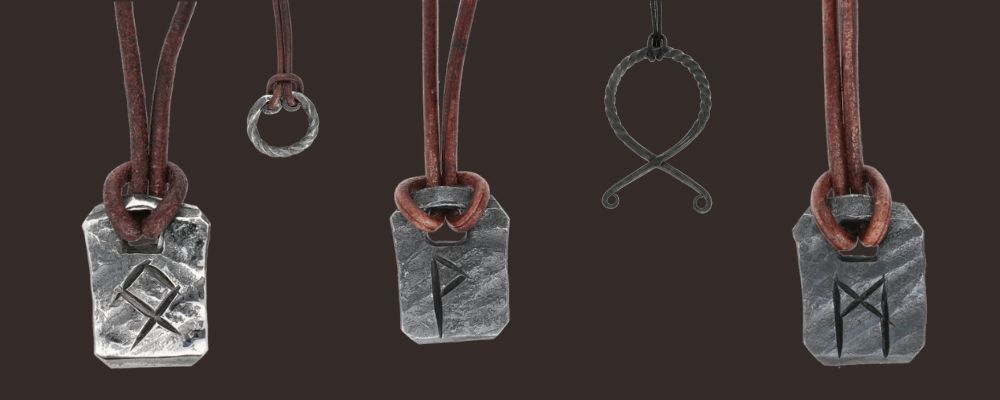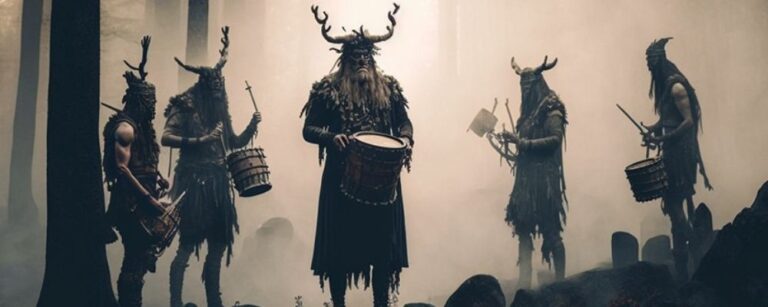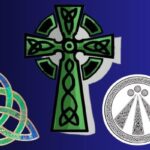Several different types of magic are known from the Norse world. There is Seidr magic used by powerful seeresses and Volva (witches). Then there is rune magic practiced by warriors and the Galdrastafir runic magical staves from medieval Iceland.
Galdr is another magical art known from the Viking world. This is a type of magical spell or incantation mentioned several times in the surviving sources. The details that survive about this practice are limited, so it remains a fascinating mystery!

Examples of Galdar
Galdr, or Galdar in the plural, are magical songs. Several important characters in the sagas and histories are described using Galdar.
The witch and seeress Groa uses Galdar several times. In the Skaldskaparmal she chants a Galdr to magically remove shards of Hrungnir’s whetstone that became lodged in Thor’s head while the two were battling. Thor distracts her during her work and the spell goes a little awry, so some of the shards of the stone remain in the god’s head.
After her death, Groa’s son Svipdagr summons his mother from beyond the grave and she sings nine different Galdar to help him complete a task that has been set for him by his stepmother.
In Bosa’s Saga, a seeress named Busla appears in the bedchamber of King Hring of Ostergotland and uses her magical song to convince the king not to kill his son Bosi, but rather send him on an impossible quest. She then uses her magic to help him overcome various obstacles. She dies turning herself into a giant dog to fight King Harek of Bjarmaland, which launches an attack in the form of a giant boar.
The Havamal also describes Odin as having mastered 18 Galdar, nine of which he learned from his uncle, who was probably Mimir. His songs are capable of a variety of forms of magic including protecting against fire, sword edges, arrows, fetters, and storms, and conjuring the dead people so that Odin can speak with them.
Other Galdar are described as being able to ease the pain of childbirth for women, bring madness to another person, raise storms, make distant ships sink, make swords blunt, make armor soft, and decide between victory and defeat in battle.
Interestingly, one of the kennings for Sigyn, the goddess of victory, is Galdrs hapt, which means Galdr fetters or Galdar goddess, and may link to the idea of deciding the course of battles.
In England, in areas where Danelaw was in force, men of the church complained about women who chanted Galdar over herbs with the intention of capturing men.

Form of Galdar
While there is no evidence in surviving descriptions of Galdar that they were linked with written runes, the practice does seem to have been linked with rune magic, rather than Seidr magic.
Seidr magic was mainly the domain of women, and it was considered unseemly for men to practice the art. Rune magic was more masculine, and also practiced by women, and Galdr seems to have been treated the same.
It is interesting that Odin is clearly a master of Galdar, as he knows 18 songs. He is also a master of rune magic. Odin learned the secrets of the runes by hanging himself from Yggdrasil for nine days and nights pierced by his own spear, and then shared that knowledge with mankind. He shows them how to use the runes as both a form of writing and a magical toolkit.
Rune magic suggests that words have power, and Galdar work in the same way, except that they use the spoken word instead of the written word. It is interesting that Odin is also connected with the Mead of Poetry, which grants mastery of the spoken word.
Galdar seem to have taken various different forms. Some seem to have been composed spontaneously by a practitioner for a specific purpose. Others seem to be formal spells that must be learned.
These formal spells often seem to have been composed in a special meter called galdralag, which is closely linked to an alliterative sis-lined verse called ljodahattr, but with an extra line at the end.
How the verse works is that lines one and two are paired using alliteration, then line three stands on its own with alliteration within the individual line. This pattern is repeated with the next three lines, and then a final line is added to a Galdar to reiterate the purpose of the verse.
This format can be seen in a Galdr that Skirnir used to force the giantess Gerdr to marry the god Freyr.
Heyri jötnar,
heyri hrímþursar,
synir Suttungs, sjalfir ásliðar,
hvé ek fyrbýð,
hvé ek fyrirbanna
manna glaum mani,
manna nyt mani.
“Give heed, frost rulers, hear it, giants. Sons of Sutting, and gods ye too. How I forbid and how I band the meeting of men with the maid. The joy of men with the maid.
A better example for English speakers may be one written by a modern practitioner known as Riley. They wrote the example below to call upon Loki to protect a child who has lost their first teeth.
As I throw my child’s teeth into the hearth
I ask Loki to strengthen (child’s name)’s heart
Protect my poppet from all mistreatment
Grant them strength
And help them succeed
So that they may survive and shine
Strong Loki, turn these bone teeth into gold.

Alternative Form of Ritual Chanting
Galdar also exist in modern rune magic, which is only loosely based on ancient practices. The modern form of Galdar are mostly credited to Edred Thorsson, a respected runic scholar. He suggested that Galdar can be formed by chanting single runes or certain rune combinations repeatedly to form a song.
There is some historical evidence to support this approach. In the migration period, just before the start of the Viking age, there are examples of Elder Futhark runic inscriptions that include examples of a single rune repeated several times, seemingly as a kind of incantation.
The Tiwaz rune is seen most often, but other runes are also used. The runic combination ALU also appears often as a kind of runic configuration for protection, and it may also have been chanted for the same purpose.
This is the type of Galdar that our expert craftsmen chant while making our iron rune pendant necklaces, to imbue the pendant with the power of the rune depicted. You will find these special handmade pendants in our Raw Line collection.








